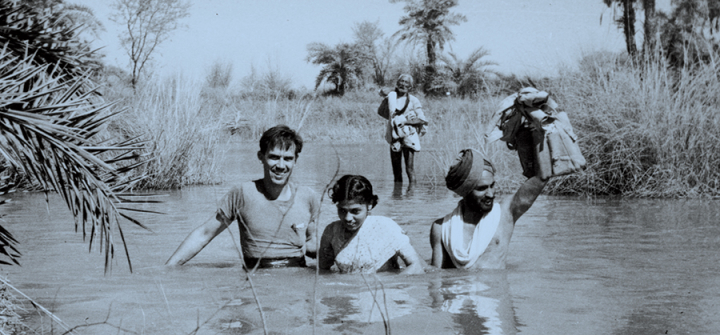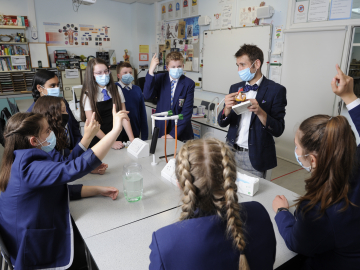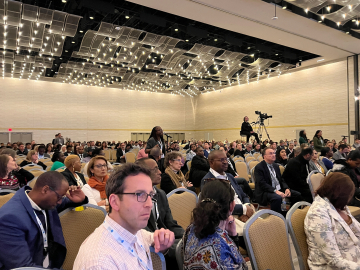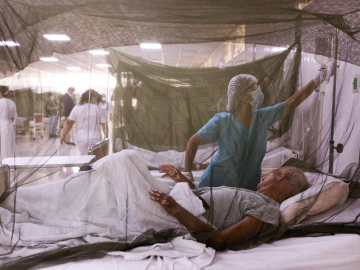Health & Humanity: Q&A with Historian Karen Kruse Thomas
Health and Humanity: A History of the Johns Hopkins Bloomberg School of Public Health, 1935-1985 by Karen Kruse Thomas chronicles the development of public health at Johns Hopkins, set in the context of mid-20th century public health education, research and policy. Global Health Now writer Lindsay Smith Rogers recently spoke with Thomas, the Bloomberg School’s historian, about the past, present and future of public health.
Your book follows Elizabeth Fee’s Disease and Discovery: A History of the Johns Hopkins Bloomberg School of Public Health, 1916-1939. Why does your book begin in 1935?
1935 was a milestone year for American public health because the American Social Security Act passed that year. That act, which we think of as being about retirement, provided the first major federal funding for state and local health departments and training public health professionals.
What aspect of the School’s history stood out to you in writing the book?
The scope of the School’s work intersects with every major health agency, philanthropy, and NGO in the world. [The School was] there at the creation of the CDC, the WHO, USAID’s health division...There’s correspondence with just about every major figure in the history of 20th century public health.
The book references death and disease rates evolving from “per thousand” to “per hundred thousand.” Your view of the future of public health is “per million?”
I hope it will be. Statistics are a core part of public health, and biostatistics was really born at the School. What used to be the Department of Biometry and Vital Statistics became the Department of Biostatistics in 1930. That meant [a shift from] counting births and deaths based on Health Department certificates to the early years of biocomputing. Calculators became much more powerful [and could] measure on a larger scale disease trends in a population. Some of the biostatistics methods that were developed here by the School were then adopted as part of the International Classification of Diseases.
In the period that you cover, can you point to moments when the political climate clearly affects public health?
In 1948 there is endless optimism about what can be done with public health. There was a propaganda film created by the US Information Agency, a “documentary” designed to talk about the greatness of American medicine and public health. [The film] was shown in the US and internationally to medical students as both a recruitment and propaganda film.
In 1948 there was [also] a lot of activism to enact national health insurance. Many people at the School were part of that, promoting the uniting of medical and public health systems to include both prevention and treatment as a seamless effort.
But [the Red Scare began] and part of anti-Communism was a strong campaign against what the American Medical Association called “socialized medicine.” Public health had to retreat and go on the defensive against charges that there are Communists running amok in the US Public Health Service. Health departments had to shift to taking on civil defense and biodefense as key parts of their mission in order to continue [federal] funding.
What can public health professionals do to protect their work in shifting political climates?
Public health professionals really need to be as savvy as everybody else in politics. We need to find points of cooperation where our best interests match some of the political aims of the day.
As a historian who has written a book about public health, define public health in 100 words or less.
This is what I call my cocktail napkin definition of public health: It’s different from medicine in that instead of treating individual patients after they are already sick, public health is about 2 things: prevention and population. We try to stop disease before it starts and we try to do that on a community and whole-population level rather than on an individual level. Anything that falls into that—infectious disease, chronic disease, mental illness, injury, gun violence— everything is fair game as long as we have prevention and population approaches involved.
Karen Kruse Thomas is currently at work on a third installment of the history of the Johns Hopkins Bloomberg School of Public Health that will span 1985 to the 2016 Centennial.
Buy Health and Humanity: A History of the Johns Hopkins Bloomberg School of Public Health, 1935-1985 before January 15, 2017 and get 40% OFF and free shipping by ordering from JHU Press and entering code HHOL at checkout.
Join the thousands of subscribers who rely on Global Health NOW summaries and exclusive articles for the latest public health news. Sign up for our free weekday enewsletter, and please share the link with friends and colleagues: Subscribe to GHN
Carl E. Taylor (far left), the founding chair of the Department of International Health at Johns Hopkins, in India in the 1950s. Image: The Alan Mason Chesney Archives of the Johns Hopkins Medical Institutions.





